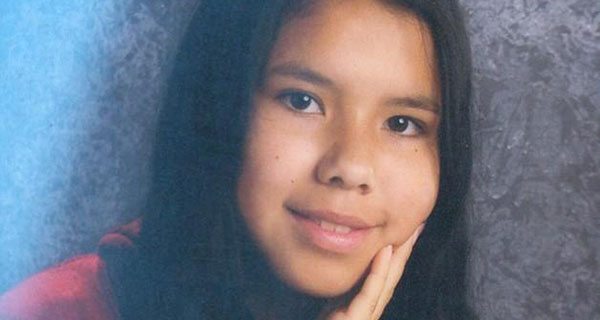 An Indigenous spokesperson interviewed on CBC Radio the day after a jury acquitted Raymond Cormier in the death of Tina Fontaine said the case is a symbol of the way our society doesn’t seem to value the lives of Indigenous females as much it does those of other women.
An Indigenous spokesperson interviewed on CBC Radio the day after a jury acquitted Raymond Cormier in the death of Tina Fontaine said the case is a symbol of the way our society doesn’t seem to value the lives of Indigenous females as much it does those of other women.
He’s right.
Indigenous girls and women are much more likely to be the victims of abuse – or murder – than are non-Indigenous females. In fact, Statistics Canada says Indigenous women are three times more likely to be the victims of homicide.
A steady stream of cases make their way through the courts involving Indigenous females who’ve been victimized. These cases are regarded as routine and receive very little attention from the media or Indigenous organizations. For all intents and purposes, they are ignored.
What makes the Fontaine case so different? Why is it receiving such enormous press coverage?
The trial itself was not unusual. The Crown’s case was weak and the jury included Indigenous people. The verdict had nothing to do with the racial background of the accused or the deceased.
So why are Indigenous organizations concentrating all their fire on this case, while ignoring the many other anonymous cases?
The answer is simple: Fontaine’s alleged killer doesn’t appear to be Indigenous.
That fact actually makes the case quite unusual. A well-known RCMP report says that in the vast majority of cases of abused or murdered Indigenous girls and women, the abuser or killer is an Indigenous man who was an acquaintance or a family member.
The same peculiar kind of bias is also evident at the National Inquiry into Missing and Murdered Indigenous Women and Girls. An astounding amount of time and money has been spent on the examination of the tiny percentage of cases that involve a non-Indigenous perpetrator, while the overwhelming majority of cases in which the abuser or murderer is Indigenous get much less attention.
Why is this happening? Why are the chiefs’ organizations and Indigenous advocates focusing only on the small percentage of cases that involve a non-Indigenous perpetrator, while virtually ignoring the much more common cases involving an Indigenous perpetrator? (Or excusing the conduct of Indigenous abusers or murderers by saying they are victims of colonialism, residential schools, or some other excuse.)
Why do the chiefs’ organizations and the inquiry itself seem to value the lives of Indigenous women who are victims of non-Indigenous men more than they value the lives of Indigenous women who are victims of their violent Indigenous partners or relatives?
And why is the mainstream media allowing itself to act as a willing partner in this deception?
Could it be that the media and the chiefs’ organizations want us to believe that the main culprit in the sad drama now playing out in this country is racism, when it is perhaps something else entirely?
Make no mistake: racism is real and must be dealt with.
But it’s not the real villain of the piece. That villain is Canada’s dysfunctional reserve system – a system that has produced so many marginalized and vulnerable girls and women. That reserve system has been built – and is being shamefully kept in place – by the few who profit from it. And by a weak federal government that allows this tragedy to continue on its watch.
So why do the mainstream media, the chiefs and the federal government play along with this fraudulent game?
Your answer is as good as mine.
Brian Giesbrecht is a retired judge and senior fellow with Frontier Centre for Public Policy.
The views, opinions and positions expressed by columnists and contributors are the author’s alone. They do not inherently or expressly reflect the views, opinions and/or positions of our publication.

